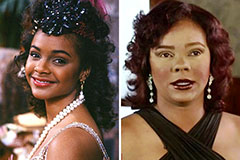The record of specialist fumbling are brimming with iconic signs, tangible depictions of magnificence, and testimonies to the devotion and expertise of its champs. Among these treasured artifacts, few reverberate with the exact same degree of splendour and acknowledgment as the WWF Big Eagle Belt. This champion title, with its distinctive design and the lineage of epic numbers who held it aloft, occupies a substantial chapter in the background of the Globe Fumbling Federation (WWF), now referred to as copyright. To absolutely value its significance, we need to delve into its origins, development, the titans who used it, and the enduring legacy it remains to keep in the hearts of battling lovers worldwide.
The WWF Big Eagle Belt wasn't simply a reward; it was a declaration. Introduced in 1988, it marked a departure from the previous, smaller sized champion layouts, ushering in an age of more visually enforcing and prominent equipment. The name itself, often shortened to simply the " Huge Eagle," aptly described its striking look. Identified by a big, elaborately in-depth eagle emblem at its facility, wings outstretched in a symbol of prominence, the belt exuded an mood of power and value. Flanking the central plate were smaller sized side plates, commonly including the WWF logo and adjustable rooms for the champ's name. The abundant, dark natural leather band further highlighted the gold-plated greatness of the central style, making it immediately well-known and desired.
The introduction of the WWF Big Eagle Belt coincided with a duration of substantial development and mainstream appeal for the WWF. Under the leadership of Vince McMahon, the firm was changing into a worldwide home entertainment sensation, fueled by larger-than-life personalities and engaging storylines. The new championship design served as a visual foundation of this age, held by the top stars that headlined sold-out sectors and astounded millions viewing in your home.
The lineage of champs who held the WWF Big Eagle Belt reviews like a who's that of wrestling royalty. The inaugural champion was none aside from "Macho Man" Randy Savage, a flamboyant and greatly skilled entertainer whose reign set the stage for the title's respected future. Complying with Savage, a sequence of renowned figures etched their names into the belt's tradition. Hulk Hogan, the utmost icon of 1980s wrestling boom, held the title several times, better strengthening its significance as the peak of WWF accomplishment. His epic character and the legendary picture of him hoisting the WWF Big Eagle Belt high above his head are indelibly connected in the minds of fans.
The 1990s saw the WWF Big Eagle Belt continue its power as the top reward, decorating the waistlines of a brand-new generation of battling icons. The Ultimate Warrior, with his extreme power and connection with the target market, included his special phase to the title's background. Bret "The Hit Man" Hart, a technological wrestling master, brought a different kind of reputation to the champion, showcasing the in-ring excellence it stood for. Shawn Michaels, the "Heartbreak Kid," with his charisma and athleticism, more raised the title's importance throughout his memorable regimes.
Each champ brought their very own distinct style and character to their tenure with the WWF Big Eagle Belt, adding to its evolving narrative. Title changes usually functioned as pivotal moments in WWF storylines, sustaining rivalries and captivating target markets with significant battles. The aesthetic spectacle of the championship being defended in main event suits on pay televisions additionally sealed its status as the best reward in professional wrestling.
Beyond the specific champs, the WWF Big Eagle Belt itself became an important part of battling iconography. Its look on advertising products, goods, and computer game covers solidified its place in pop culture. The sight of the belt curtained over a champ's shoulder ended up being a widely recognized icon of success in the wrestling globe.
As the WWF transitioned into the Perspective Era in wwf big eagle belt the late 1990s, the WWF Big Eagle Belt undertook a subtle redesign, often referred to as the "Winged Eagle" belt by collectors as a result of the much more obvious wing layout of the main eagle. This upgraded version remained to represent the WWF Championship throughout a period of unprecedented appeal for the firm, held by legendary numbers like Stone Cold Steve Austin and The Rock.
Eventually, the WWF Big Eagle Belt layout was retired in the late 1990s, giving way for a new, much more contemporary champion design. However, its influence on the background of expert fumbling continues to be undeniable. The WWF Big Eagle Belt is fondly born in mind by followers as a sign of a golden age in fumbling, a time when epic heroes battled for the utmost reward, represented by this spectacular item of equipment.
The heritage of the WWF Big Eagle Belt expands past its physical existence. It stands for an era of narration, character growth, and in-ring action that mesmerized a global audience. It acts as a pointer of the legendary numbers that led the way for the fumbling landscape we understand today. Enthusiasts and followers alike hold replicas of the WWF Big Eagle Belt in high regard, a tangible web link to a treasured past.
To conclude, the WWF Big Eagle Belt was more than simply a championship title; it was a symbol of quality, a representation of the dreams and ambitions of professional wrestlers, and a aesthetic cornerstone of a transformative period in battling history. From its striking design to the legendary champions who happily carried it, the WWF Big Eagle Belt continues to be an long-lasting icon, permanently engraved in the cumulative memory of battling followers as a testimony to the grandeur and enduring appeal of the sporting activity. Its story is an important part of the abundant tapestry of wrestling lore, a chapter that continues to be commemorated and kept in mind with a sense of nostalgia and regard.
 Jennifer Grey Then & Now!
Jennifer Grey Then & Now! Neve Campbell Then & Now!
Neve Campbell Then & Now! Lark Voorhies Then & Now!
Lark Voorhies Then & Now! Melissa Joan Hart Then & Now!
Melissa Joan Hart Then & Now! Nadia Bjorlin Then & Now!
Nadia Bjorlin Then & Now!